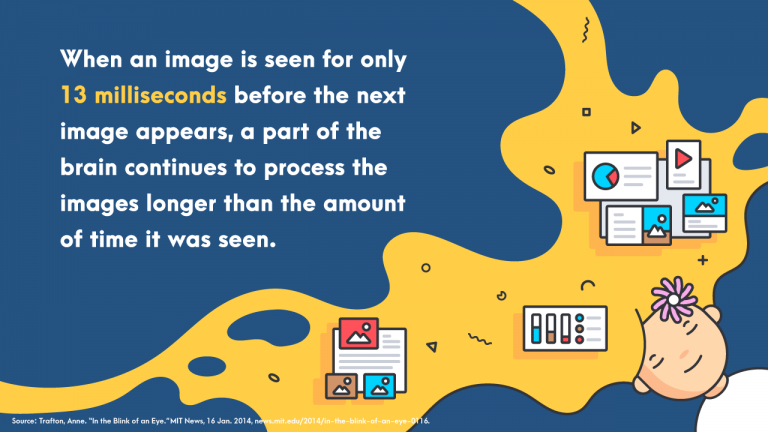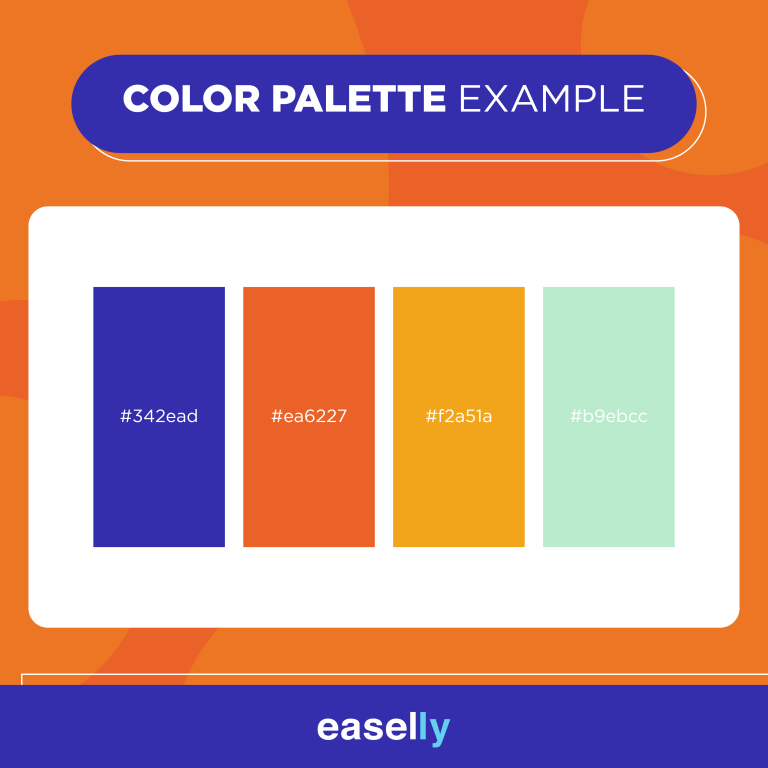No matter how original or innovative your product or service may be, your company is only as valuable as your brand image.
In the 2019 Edelman Trust Barometer Special Report, 66 percent of consumers surveyed would rather stick with their brand of choice than a competing brand claiming to be more innovative. Meanwhile, 75 percent said they’d value trust more than trendiness.
In today’s highly saturated market, companies must stand out to thrive.
A visual branding strategy that highlights the brand image that you want to convey (like trustworthiness) is the most effective way to be heard through the noise.
After all, your brand image is a reflection of who you are and what your company represents. It’s the reason why customers support and care about your company.
Your brand image encompasses everything from visual identity to name recognition. This recognition takes time to nurture and grow, but with time and effort, you can launch an impactful brand that engages audiences and encourages them to learn more about you.
How to plan for an effective visual branding strategy
Planning for and creating your brand visuals can be an overwhelming process.
As you begin the multifaceted process of branding (or rebranding), here’s a checklist to guide you through in making an effective visual branding strategy.
1. Establish your brand voice and tone.
Your brand voice and tone is the attitude your business is conveying, not only through words but also through your visuals.
It’s essential to establish the tone of your brand first, then everything else can align with your chosen style.
Brand tones can be:
- Prestigious
- Fun and Playful
- Amiable and inviting
- Pragmatic or practical
- Modern and innovative
- Intriguing
- Emotionally impactful
Whatever tone you select, be sure it’s authentic and aligns with your company’s personality. A forced tone will feel phony and breed mistrust.
Pro tip: If you’re finding it difficult to know your tone, take a look at your values, mission, and vision. These will guide you toward what statement you want to project.
2. Pay special attention to your logo.
There’s no greater summary of your brand than your logo.
Your logo is a visual representation through shapes, texture, and colors that customers will remember.
Our brains can process entire images that the eye sees for as little as 13 milliseconds. With that said, logos are tremendously powerful because they can sell your brand without you saying a word.
Logos are processed faster and trigger immediate brand recognition. They can fall in numerous categories that include minimalistic, bold, traditional, or even soft. Just as your business name can tell a story, so can your logo.
If you know what story you want to be told, you can instantly tell it to your audience through thoughtful design and colors.
For this reason, it is best to hire a professional to do a custom logo design for business for you, since this task is more important than many realize.
Pro tip: Remember that our brains connect colors and shapes with feelings. Therefore, an effective logo should lure in customers by subconsciously tapping into their emotions.
For brand logo inspiration, take a look at the 10 most popular brands and the stories behind their logos in an infographic below.
3. Consider your color palettes carefully.
A logo will often, but not always, reflect your company’s color palette.
A typical color palette ranges between one to three primary colors and two to three secondary colors. Of course, there are always exceptions to the rules.
Color palettes will distinguish your brand from other companies within your industry; therefore, you want to be sure you’re selecting colors that your competitors are not.
Another consideration is the cultural context. A positive color connotation in the U.S. can have a negative connotation in another country. This is especially important to consider if you plan to launch globally.
Pro tip: If you’re stuck, try starting with one color that speaks to your brand and then build a palette off that color.
4. Be mindful of your images.
Your logo creates a strong first impression. Images like infographics, blog post visuals, social media images, icons, and slideshare presentations used throughout your marketing material will reinforce this impression and your company’s identity.
Be mindful that your brand is not replicating that of another, especially in the same industry.
The results of a Princeton University study suggests that audiences will have a solid impression of a brand within the first seven seconds of an encounter. Further research suggests a tenth of a second is all it takes for customers to determine trustworthiness.
If your brand is being confused with another, this will create a misleading first impression — an impression that will be difficult to erase.
From photography to illustrations, it’s important to create guidelines that provide clear artistic and creative direction to keep your visuals like infographics on brand.
Pro Tip: Creating a mood board for this process is especially helpful. A mood board will not only support your vision, but it will add clarity to your brand’s concept.
5. Keep an eye on your fonts.
Fonts are another element that adds to your brand’s personality and character. They provide a subtle way to emphasize your brand story.
But beware, using the wrong font can detract from your message. It can even make your content difficult to read and decipher.
The most important rule when selecting fonts for your brand is to ensure they are clean and readable.
If the font is too small or there’s not enough contrast, it can make the content nearly impossible to understand. Audiences will immediately lose interest.
Different sized and bolded fonts also create hierarchy, signaling to the reader what is most important and should be read first.
Pro Tip: Selecting and sticking to one or two font types also builds unity and continuity.
Visual branding is a collaborative effort
It’s easy to get paralyzed in the branding process. If you get hung up on any part of this checklist, brainstorming can provide the boost you need to get creative juices flowing. Don’t be afraid to ask others or crowdsource ideas. Crowdsourcing can transform your branding in many ways — from discoving new perspectives to encouraging brand advocacy.
The feedback will add to your vision and incorporate fresh ideas you wouldn’t have generated on your own. You may be surprised by the feedback you receive and decide to shift your brand entirely.
Whatever path you take, try to foster a culture of collaboration, especially if you’re working with a team. This will allow for greater innovation and creative concepts.
Editor’s note: This guest post comes from Grant Polachek of Squadhelp.com.
About the Author
Grant Polachek is the Head of Branding at Inc 500 company Squadhelp.com, the worlds #1 naming platform, with 25,000+ customers from early-stage startups across the globe to the largest corporations including Nestle, Philips, Hilton, Pepsi, and AutoNation. Get inspired by exploring these winning business name ideas.



